Understanding search intent is a crucial aspect of modern SEO strategies. It involves deciphering the underlying reasons why users perform searches and aligning your content with those needs. By identifying search intent, you can create content that addresses the specific requirements of your audience, thereby improving your website’s visibility and ranking on search engines. In this blog post, we will explore the four main types of search intent and how to optimize your content accordingly.

What is Search Intent?
Search intent, also known as user intent, refers to the purpose behind a user’s query on search engines. It helps you understand what users are looking for, whether it’s information, a product, a specific website, or an action they want to perform. Identifying search intent allows you to tailor your content to meet these needs, enhancing user satisfaction and engagement.
Four Types of Search Intent
- Informational Intent
- Goal: To obtain specific answers or information.
- Keywords: How, why, what, tutorial.
- Example: “How to fix a flat bike tire.”
- Optimization Tips:
- Create content that provides clear and detailed answers.
- Use bullet points, step-by-step guides, and infographics to make information easy to digest.
- Incorporate FAQs to address common queries.
- Commercial Intent
- Goal: To research and evaluate products or services before making a decision.
- Keywords: Best, review, compare, product or service name.
- Example: “Best inner tubes for road bikes.”
- Optimization Tips:
- Offer product reviews, comparisons, and buying guides.
- Highlight the benefits and features of products or services.
- Use persuasive language and include testimonials or user reviews.
- Transactional Intent
- Goal: To complete a purchase or take a specific action.
- Keywords: Buy, cheap, for sale online, download, sign up.
- Example: “Buy tire tubes online.”
- Optimization Tips:
- Optimize product pages for conversion with clear calls to action.
- Ensure a seamless and secure checkout process.
- Use high-quality images and detailed product descriptions.
- Navigational Intent
- Goal: To find a specific website or webpage.
- Keywords: Specific site names or branded terms.
- Example: “bikeparts.com.”
- Optimization Tips:
- Optimize your website for branded keywords.
- Ensure that your site is easy to navigate with clear menus and links.
- Maintain a strong brand presence across all online channels.
How to Identify Search Intent
- Analyze Keywords: Use keyword research tools to identify the intent behind specific queries. Look for patterns in the types of words and phrases users employ.
- Examine Search Results: Review the top-ranking pages for your target keywords to understand what content formats and types Google favors for different intents.
- Understand User Behavior: Utilize analytics tools to track user behavior on your site and see which content resonates with your audience.
- Create Targeted Content: Develop content tailored to each type of search intent, ensuring it aligns with the needs and expectations of your audience.
- Monitor and Adjust: Continuously monitor your site’s performance and make adjustments based on changes in user behavior and search engine algorithms.
By understanding and optimizing for search intent, you can enhance your SEO strategy and deliver content that meets the needs of your audience. This approach not only boosts your search rankings but also improves user satisfaction and engagement, driving more traffic and conversions to your site.




